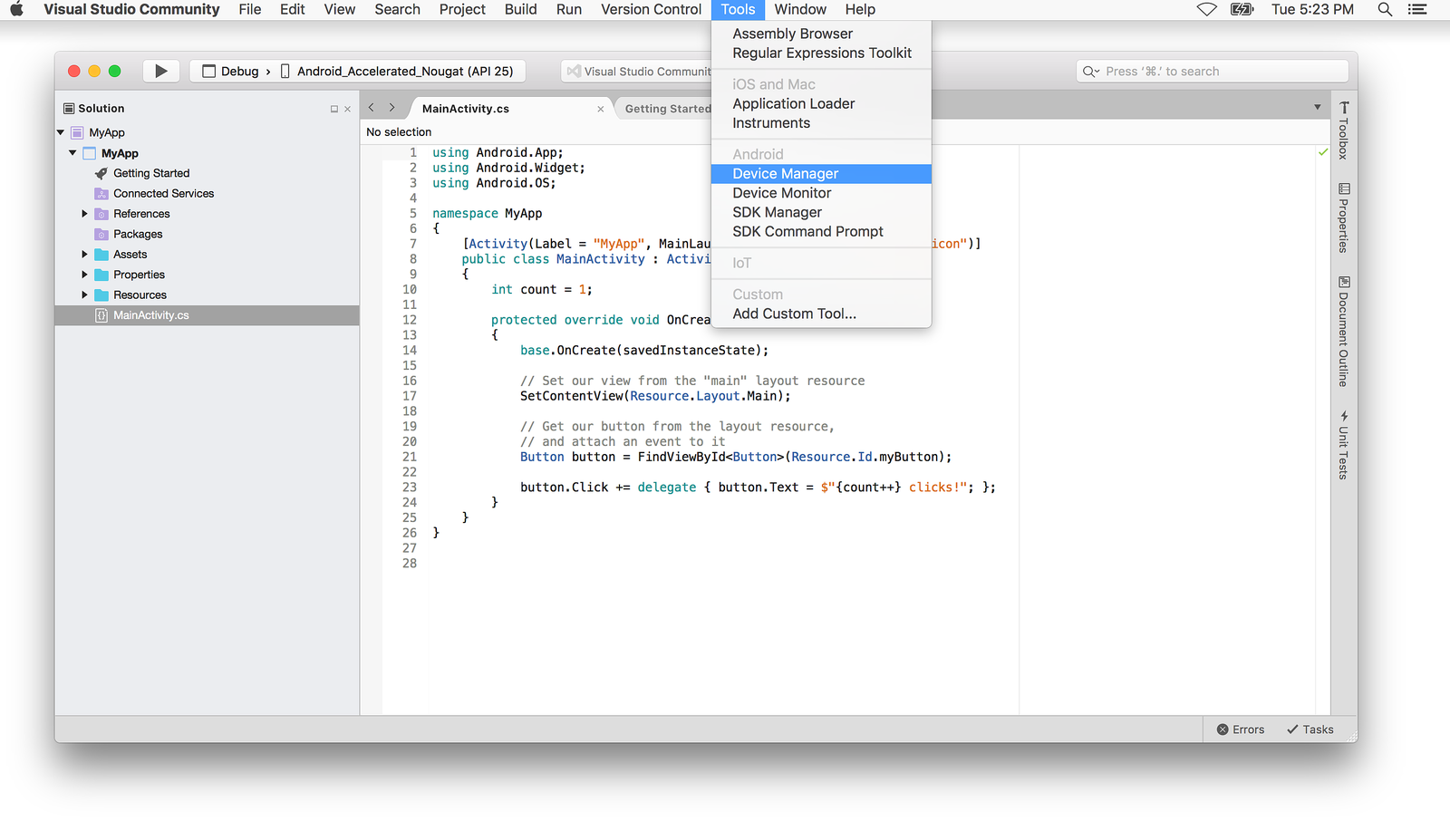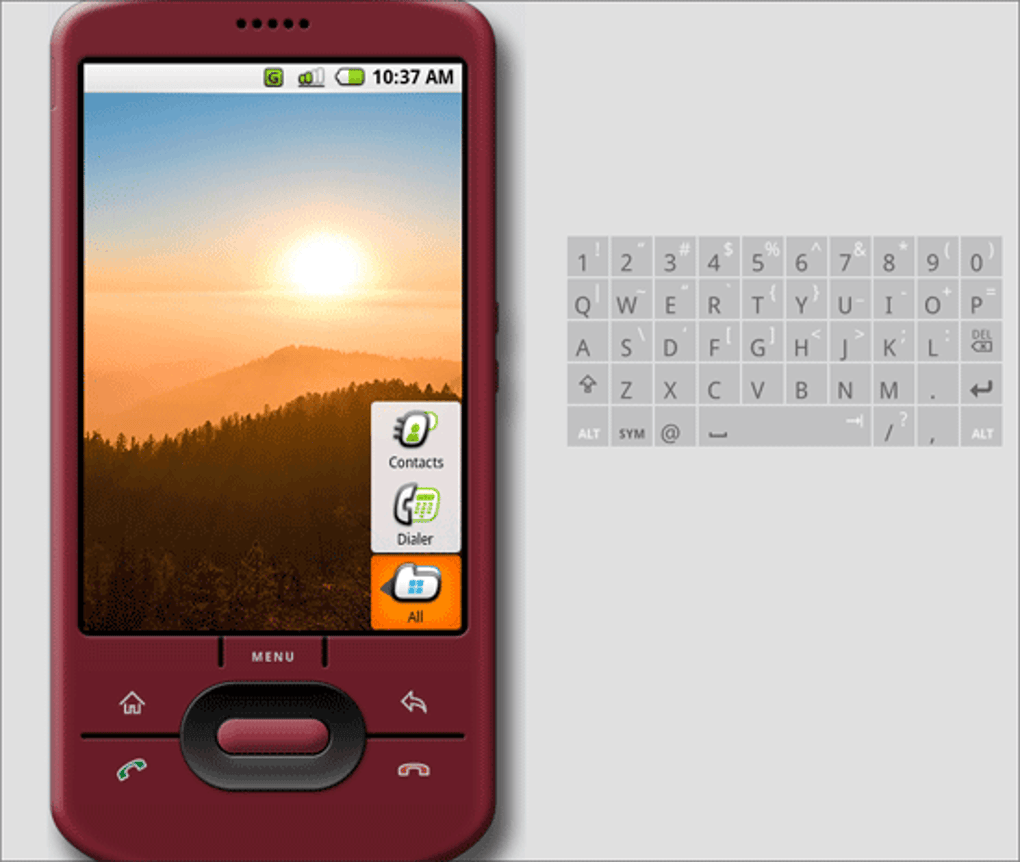
I've tried an emulator in a VM before on this Mac, it wasn't pretty.
MAC ANDROID EMULATOR SDK ANDROID
I went ahead and installed the SDK & JDK on Windows and will just use a physical Android device w/VS. What I get for only getting a 250 GB SSD Mac.

I wanted to do this mainly to conserve disk space. C:UsersTBRAppDataLocalAndroidSdk, you will see a folder name system-images this folder was created. So I guess the SDK/JDK are platform-specific. Inside the tools/ directory the ls command returns: android emulator64-mips lib screenshot2Īnt emulator64-x86 lint source.propertiesĭraw9patch emulator-x86 monkeyrunner traceviewĮmulator hierarchyviewer NOTICE. Run Android Emulator on PC, Laptop or Tablet. So why is this happening? How can I fix it? Am I doing something wrong? It worked before so why would it be happening to me now? I ran the command pwd once inside the tools/ directory and this is what it returned: /home/nikita/android-sdk-linux/tools Say: Mac/Linux: Open a terminal and navigate to the tools/ directory in the Android SDK, then execute android sdk.īut when I navigate into the tools/ directory and execute the command android sdk, I get the following error message: android: command not found $ cat > emulator /tools/emulator.I am trying to open my Android SDK Manager which I installed and used before, and the instructions on the official website for it here: Copy or remember the path listed in the box that says 'Android SDK Location.' If you are on macOS or Linux, add an environment variable pointing to the Android SDK location in /.bashprofile (or /.zshenv if you use Zsh) - eg. Open Terminal and navigate to platform-tools folder in android-sdk. Here's how: (note: $ represents the shell prompt, don't type it yourself) $ cd /tools Click on the 'SDK Tools' tab and make sure you have at least one version of the 'Android SDK Build-Tools' installed. What about when the Eclipse ADT plugin calls it? Well I was feeling rather lazy at that point and didn't want to dig around in the ADT plugin to see if it had a "add these command line flags whenever running the emulator" option, so I made a little "wrapper" shell script for the emulator command that always adds the -noaudio option. Now, that works if I manually call the emulator from the command line. No sound support either, but at least I can run the emulator now. Turns out the emulator has a "-noaudio" command line option, and when I ran it with that, it worked!! So now I just run emulator with the -noaudio option always, no freezes.
MAC ANDROID EMULATOR SDK LICENSE
Click OK in the confirmation dialog that appears and accept the license agreement.

In the SDK Platforms tab, select Android 8.0 (Oreo) with an API Level value of 26, and click Apply. This will give you a list of files and folders. Once you have downloaded the SDK, extract it.
MAC ANDROID EMULATOR SDK DOWNLOAD
First download the Android SDK for either Mac or Windows. Here’s what you will need to do to access the Android 2.2 Froyo Emulator: 1.

But I decided to try an experiment that one particular day. In the Android Studio toolbar, click the SDK Manager icon () to open the Android SDK page in the Default Settings dialog. Unlike the iPhone OS SDK and Microsoft’s SDK, thankfully the Android SDK is available for both Windows and Mac. contain the latest releases of Android Studio for Linux, Windows, and Mac.

I was digging around the other day and saw this message appear on the terminal: emulator: warning: opening audio input failed I've seen this message many times before and I had always assumed that it was because the emulator didn't support sound or something like that. I was digging around the other day and saw this message appear on the terminal: emulator: warning: opening audio input failed Ive seen this message many. 6) Create an Android Virtual Device (AVD) For running the android application.


 0 kommentar(er)
0 kommentar(er)
